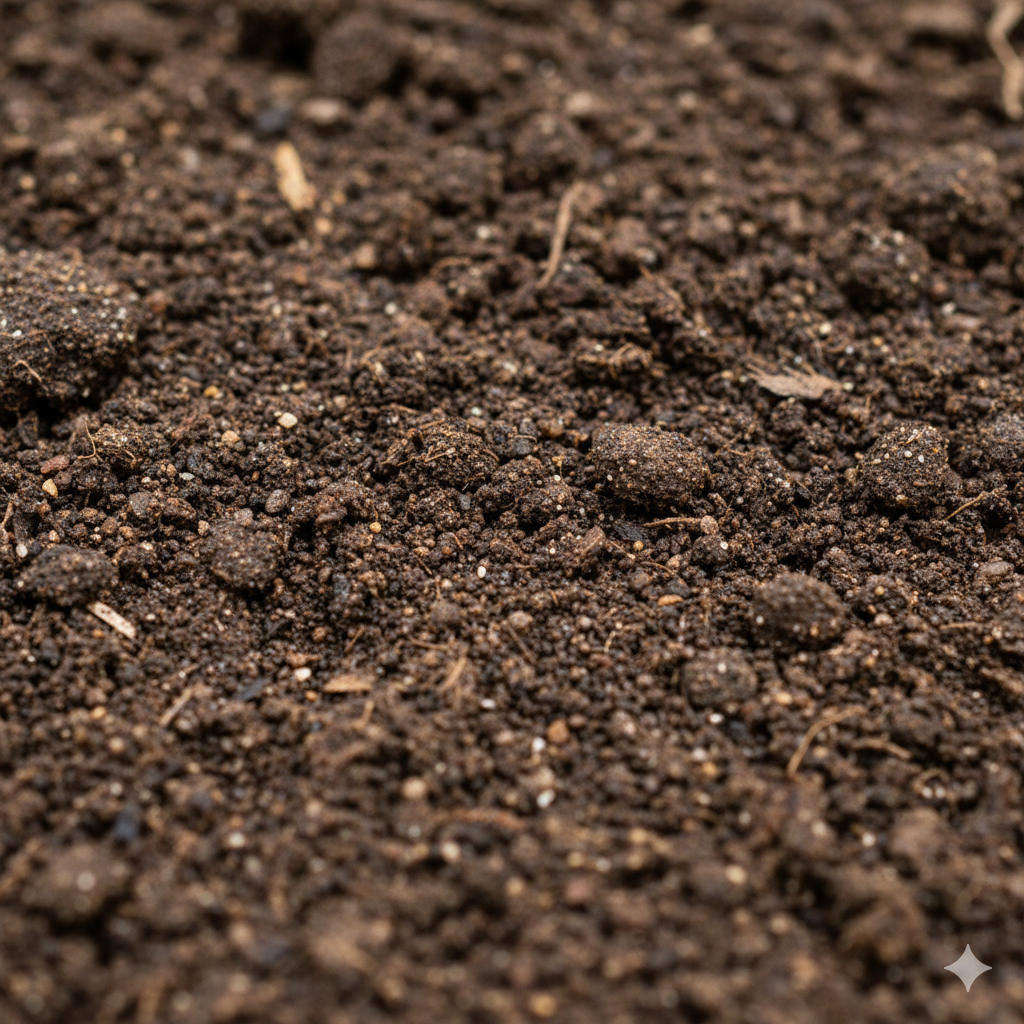Loam

Balanced, crumbly mix of sand, silt, and clay with good structure and air–water balance. Naturally fertile and easy to work.
🧱 Texture, Drainage & Fertility
Texture: crumbly, friable
Drainage: good
Fertility: high
Organic Matter: moderate
Tendencies: holds moisture yet drains well
🧪 pH
Typical pH Range: 6.0–7.0
✅ Best Suited For
- Most vegetables and herbs
- Many fruit trees and shrubs
- Ornamentals and lawns
⚠️ Not Ideal For
- Strict bog plants without added moisture retention
🛠️ Amendments & Improvements
- Top up 2–5 cm compost annually to maintain structure
- Mulch to protect soil biota and reduce surface crusting
- Avoid over-tilling to preserve aggregates
🪴 Recommended Container Mix
40% mature compost, 40% coco coir (or peat-free), 20% perlite/pumice; add slow‑release organic fertilizer.
🔍 Diagnostics
Hand Test: Forms a soft ball that breaks with a tap; slight ribbon when pressed.
Jar Test: Roughly 40% sand, 40% silt, 20% clay (varies).
🐛 Common Issues & Fixes
- Surface crusting under heavy rain: Keep covered with mulch; add organic matter for aggregate stability.
- Nutrient depletion after intensive cropping: Rotate crops; re‑mineralize with composted manure and rock dust if needed.
💡 Care Tips
- Keep living roots or mulch on the surface year‑round
- Irrigate deeply but less frequently to encourage deeper roots
🌦️ Malaysia Notes
Monsoon downpours can still compact exposed loam—mulch well and avoid working soil when saturated.
Note
Use these profiles as practical guides. Local site conditions vary—observe water infiltration, plant responses, and adjust amendments accordingly.